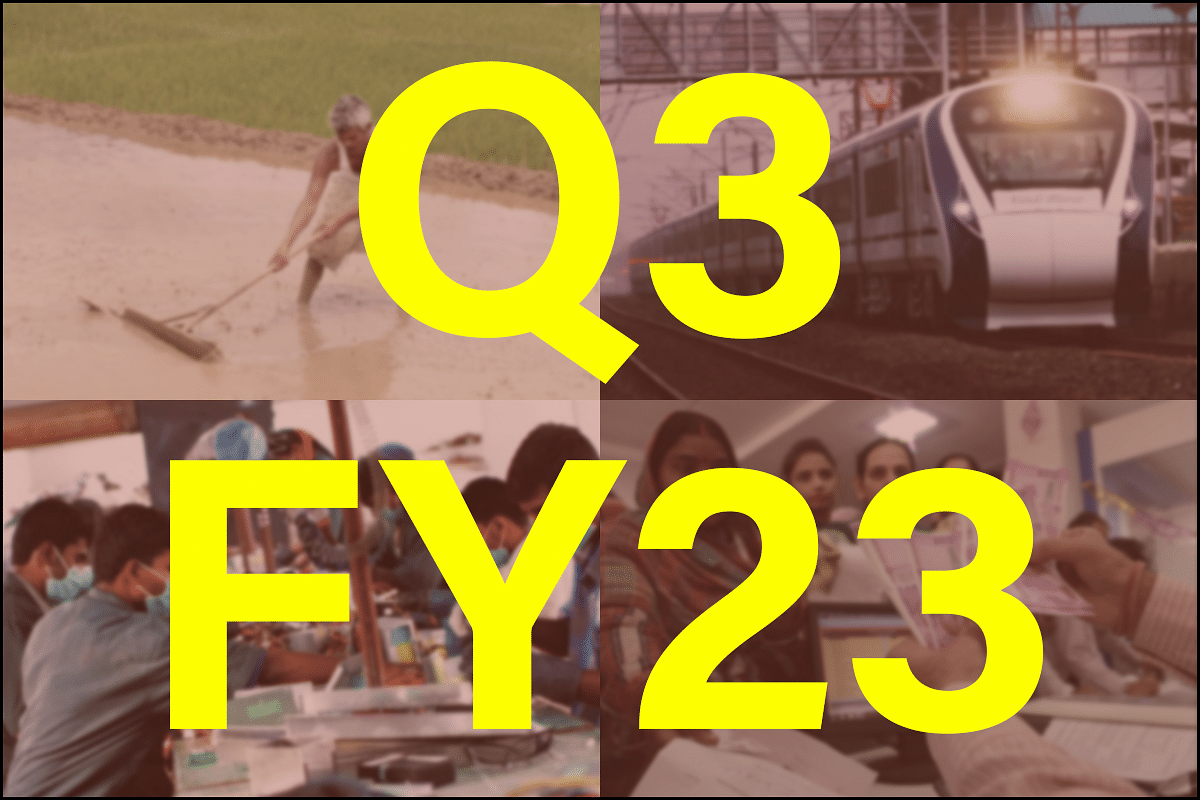Economy
Q3 GDP Tells Us A Simple Thing: Focus On Growth, Less On Inflation
- For growth to sustain, we must keep government spending robust, boost private consumption, and pause interest rates to pep up capital spending and credit growth.

GDP
Two simple points emerge from the third quarter (Q3) gross domestic product (GDP) number of 4.4 per cent growth.
If this number is pointing us in one direction, the Monetary Policy Committee (MPC) is wrong.
In a 4-2 decision, the MPC decided to retain its focus on inflation in early February, when we know that the growth challenge has re-emerged.
The two dissenting members of the MPC, Jayant Varma and Ashima Goyal, clearly were more on the ball, though one can understand the cautionary stance of the other four given untamed inflation.
Some caveats are in order to counter this negative growth scenario.
First, the 4.4 per cent GDP print is actually not that bad, for it comes on a higher base, a base raised by restating the GDP numbers for 2021-22.
The new GDP number for the last fiscal is 9.1 per cent against the earlier estimate of 8.7 per cent.
Second, Q3 (October-December 2022) saw much slower growth in private and public spending (2.1 per cent and -0.83 per cent respectively), but investment growth, as measured by gross fixed capital formation, was a healthy 8.3 per cent.
But this was on a lower base in fiscal 2021-22. We need to watch whether the revival in investment sustains before starting the handclapping.
Once again, a less hawkish stand on inflation (which implies the rate hikes need to be stopped) would help.
Third, the gross value added (GVA), which is a measure of real growth excluding the impact of taxes and subsidies, reversed a recent trend where GDP was higher than GVA.
In Q3, GVA growth was 4.6 per cent against GDP growth of 4.4 per cent.
This could mean either a weakening of net indirect taxes growth, or an increase in subsidies.
The net impact of government actions is thus lower this time.
Sectorally, agriculture, construction and services are firing well, but manufacturing was down -1.1 per cent.
One has to wait to find out whether this blip in manufacturing is a short-term phenomenon, caused by the higher production planned in Q2 ahead of festive demand, or something more problematic, where high input prices are weakening demand in general.
The overall message for policy-makers is the following.
One, while inflation, especially core inflation, remains a problem, it will have to be tackled more by fiscal and supply-side measures than monetary tightening.
More so since 2023 seems likely to be a La Nina year, which could mean a harsh summer, with an impact on kharif cropping.
Monetary policy cannot do much in this scenario.
Two, interest rates are already good enough for savers, but turning harsher for borrowers.
This will impact home and corporate borrowings, both vital for a sustained revival and jobs growth.
Again, this points to the need for a pause on monetary tightening.
Three, growth is now the main challenge.
Four rockets are needed to get GDP into a reasonable orbit: government spending, private consumption, private investment and exports (net).
During the UPA (United Progress Alliance) years, especially the second term, only one engine was firing — private consumption, while exports were beginning to falter.
Under Narendra Modi, government spending and consumption were firing in the first term, but private investment and exports flagged.
In 2023-24, exports will remain under the weather due to a global slowdown.
For growth to sustain, we must keep government spending robust, boost private consumption (which may benefit from the tax changes in this year’s budget), and pause interest rates to pep up capital spending and credit growth.
This is two-and-a-half engines at best, not four.
Of course, election years tend to be high spending years for governments, and that is growth supportive.
Clearly, our focus must be on ensuring our growth engines are not starved of fuel.
Fiscal actions should support this, and the MPC must focus not on getting inflation down to the mid-point of 4 per cent, but retaining it below 6 per cent.
Support Swarajya's 50 Ground Reports Project & Sponsor A Story
Every general election Swarajya does a 50 ground reports project.
Aimed only at serious readers and those who appreciate the nuances of political undercurrents, the project provides a sense of India's electoral landscape. As you know, these reports are produced after considerable investment of travel, time and effort on the ground.
This time too we've kicked off the project in style and have covered over 30 constituencies already. If you're someone who appreciates such work and have enjoyed our coverage please consider sponsoring a ground report for just Rs 2999 to Rs 19,999 - it goes a long way in helping us produce more quality reportage.
You can also back this project by becoming a subscriber for as little as Rs 999 - so do click on this links and choose a plan that suits you and back us.
Click below to contribute.
Latest